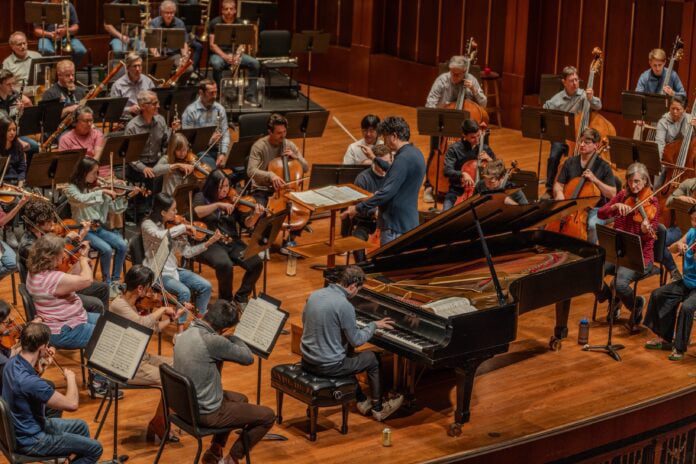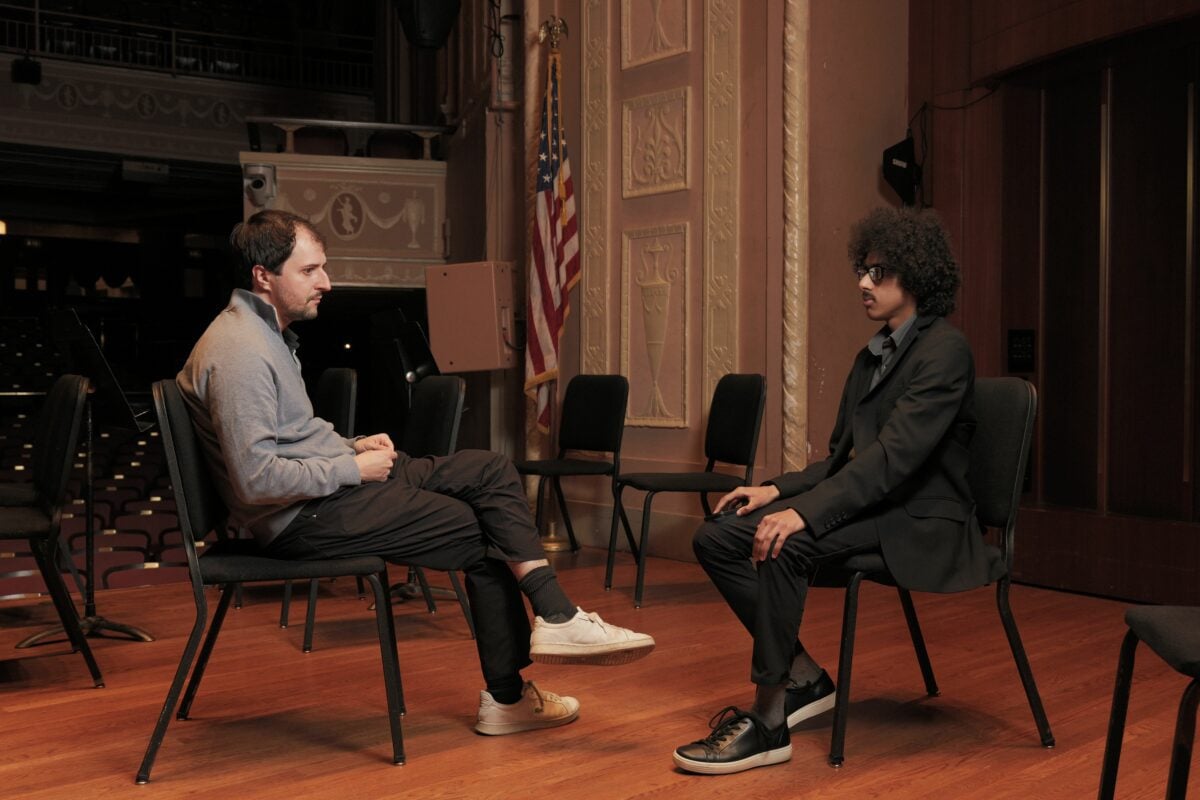
Each unplayed piece of music is but a concept. In piano concertos, it is the joint role of the conductor and pianist to see such rendered concrete, with every member of the orchestra helping articulate their imagination. Their task is not an easy one, they must create a cohesive culmination of their respective ideas, one which ensures authenticity to the score, and a typically long dead composer’s intentions, whilst imbuing invigoration and emotion in a modern day audience.
Last week, such a challenge was taken in earnest. Together, American Piano Awards winner Kenny Broberg and internationally renowned conductor Michael Sanderling put on a performance of not just mere music, but the entirety of the breathtaking and daunting essence of Scandinavian nature and the human emotions and elements that accompany.
The night began with a Swedish composer, who even Sanderling joked about not knowing, Helena Munktell, with her symphonic poem “Breaking Waves.”
The piece awakened ideas of crashing towers of water, curved above oneself not unlike the looming stretch of skyscrapers outside the theatre. Yet, equally as expressed as the terrors of these swift surges and swells which threaten one with drowning, was that which came once the water calmed. For there, after the calamity, was a serene and tender invitation to a a flat surface expanding into the distance, interlocking its curves amidst lush mountains and inviting one to a soothing swim.
These forces alternated, at times bringing about blasting brass and at others, harps seemingly plucked by the light blow of wind on a sunny day. All the while, it exhibited, as Sanderling said, “the importance of nature.”
What began next was similarly significant, Norwegian composer Edvard Grieg’s Piano Concerto in A minor, the first piano concerto ever recorded. When discussing the piece after one of his rehearsals, Broberg reflected upon it.
“You can absolutely see the fjords, these long mountains, and hills and landscapes,” he said.

He made his vision of the work clear, with articulated and ornamental arpeggios which shimmered like light upon the water, forceful chords which imposed upon the audience like cliffs, and intentional pedaling that alluded to the elusive end of inlets and the start of the sea.
Within this concerto, he said, “The piano takes, very much, the main role as a protagonist,” and such was made exceptionally evident by his ability to fade beneath and rise above the orchestra at will, emphasizing certain passages as well as his overall virtuosity.
A specific example of the former, softer side of the piano, was in the second movement. For there, after the audience bore witness to the stark image imprinted upon their minds by the natural elements of the music, the very few empty seats within the theatre seemed to be filled as the adagio began. As, within the movement, rushing less like a stream or a wave, the music moved like the swelling of tears in a nostalgic recollection, a replication of humanity. Gone were Broberg’s former threatening chords, replaced with more tender melodies, which he said exhibited “very lush, very beautiful, and very emotional” qualities, all being, “very human,”
This corporal element, however, is not the only departure from the natural qualities of the A minor concerto, for as Broberg further elaborated upon, the second movement “goes way off script, actually, to the very vague key of D flat major.” Even still, with the bond between humans and nature stretching back for centuries, yet having been so disregarded in modern moments, the second movement’s recollection seems, at times, remorseful and melancholic.
It is distinctively discontent with the present, and in those times when the music does rise, it appears only to yearn for the long-gone grandeur and romanticism of Grieg’s day. It is such that the mortal elements are indispensable and ever relevant, with Broberg saying, “You can’t separate that from the music”.
The third movement positioned the pastoral flutterings of a flute between moments reminiscent of joyous traditional Norwegian dance. Then, in a heroic ending, the melodies joined together in a booming triumph.
Following a series of standing ovations, Broberg illustrated his grasp over more delicate dynamics, playing Nikolai Medtner’s Fairy Tale in F minor. Far from the intimidating power of nature and the remorseful and rejuvenating qualities of mortality, the piece was neutral, pointing objectively to a universally shared, transcendent mysticism.
In picking this piece for his encore, Broberg not only summarized his skills, but brought to the attention of the audience a completed conclusion; that, within the world, in humans and in nature alike, there exists great swaths of spirit and inspiration.
The work served as a great bridge for the finale of the night, the second symphony of Finnish composer, Sibelius. A composition which he called, the “confession of [his] soul,” Sibelius’ symphony made for a poignant point of reflection, the finishing touch of a trifecta.

Yet, as one’s soul is a personal thing, the composition proved quite convoluted. Indeed, in this piece the skill of Sanderling was shown in full, as he carried the audience through — not mere musical lyricism — but an entire life.
“It’s very simple,” Sanderling said. “I read a score, and I see and I hear in my inner voice things which I want to show the audience.”
Though he stated he is not adding anything that isn’t in the score or that he believes go against the composer’s intention, he does believe that, “sometimes [pieces] need some special adjustments.” Such a philosophy made all the difference when he put on the kind of intricate and perplexing piece as the one at hand.
For much like in Munktell’s “Breaking Waves,” he stood above the symphony, guiding them along the work with his expansive and concise movements — perfect paradoxes that helped accentuate and diminish the music with ease. Yet here, the orchestra did not go through mere turbulent waters, but a soul’s turmoil. It is such that he turned, from once a captain, into a liberator.
For through his confident control and care, he rendered the piece free of distractions, and, with a body like silk which snapped and slide amidst the air, the melody was made hypnotic. Only applause could’ve ensued after such a magnificent performance, and a further string of standing ovations was rightfully handed over by an intellectually and emotionally engaged audience, illuminated by an artfully crafted experience of the sublime.
“The process of music, in the concert setting, is a dual creation between the composer and the performer,” Broberg said.
Here, such a twofold invention was made manifold, as the combined minds of himself and conductor Sanderling created a truly immersive experience — one wherein every spectator’s spirit was brought to the stage, as all was cast into contemplation.
Caiden Cawthon is a legally blind writer who seeks to shine a light on that not readily seen, and can be found on Instagram at @caidencawthon.




